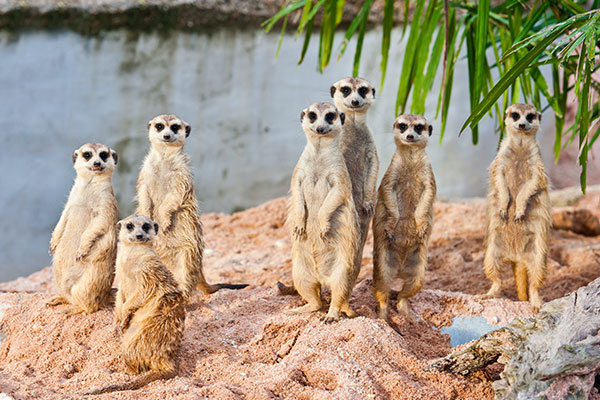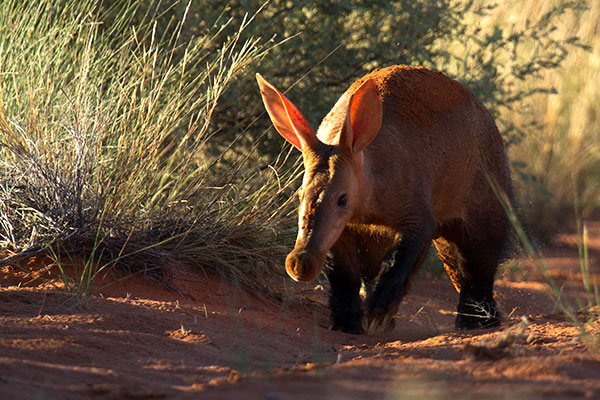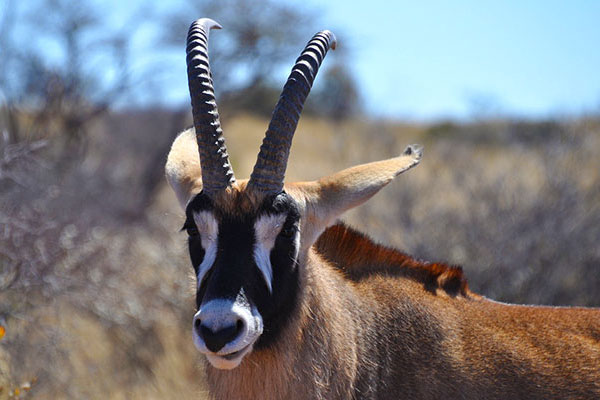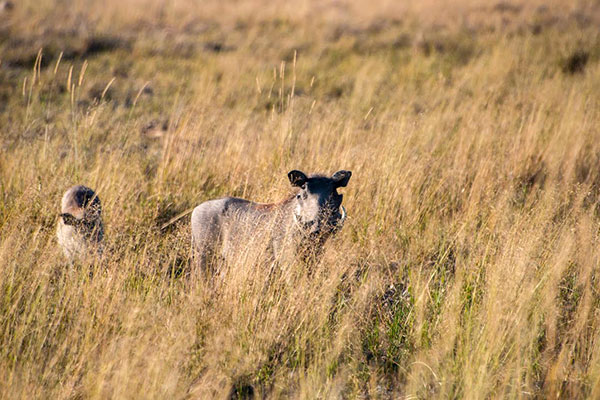Wildlife of South Africa: 10 Underrated Species
South Africa is home to incredible wildlife! The animals you’ll find on safari have adapted to the bush in fascinating ways. On your game drives or walking safaris, your expert guide will help you spot some of the more elusive animals and tell you all about the wildlife of South Africa.
You’ve probably heard of Africa’s Big 5, but look beyond the largest animals and you’ll find many more species with strange appearances and odd habits. Here are some of our favorite lesser known wildlife species in South Africa.
Pangolin
Pangolins are some of the most difficult animals to see on safari; even experienced trackers are quite excited to find one! Pangolins are endangered because they’re often poached for their meat and unique, scaly hides. In the wild, their scales protect them from predators. When threatened, they roll up into a ball, presenting an impenetrable armor of sharp scales.
Meerkat

These cute critters can be found in most regions of South Africa, but particularly the Green Kalahari. They live in burrows underground, which provide safety when predators come too close. In the morning, the entire group will stand on their hind legs to warm up in the sun. You can see them getting more active after a few minutes, and eventually they’ll go out to hunt for the day. One meerkat will stay behind as a sentry and warn the group of predators, at which point they’ll all scurry into the nearest tunnel. Meerkats have incredible eyesight and can see an eagle flying more than a thousand feet away!
Aardvark

Photo via Tswalu Kalahari
A member of the “Elusive 11,” the aardvark is notoriously difficult to spot in the wild. It almost looks like a small kangaroo, but with a snout like a pig. (“Aardvark” is Afrikaans for “earth pig.”) Its powerful paws act like shovels to burrow for termites. The nostrils of its snout seal up as it burrows to prevent dirt getting inside, and its long, curled tongue reaches into small crevices to find insects. Aardvarks are nocturnal and shy, so sighting this South Africa wildlife species is a rare treat!
Bat-Eared Fox
The bat-eared fox is one of the cutest, and least known, animals you can see in South Africa. Their distinctive ears help them hear termites—their preferred meal—digging underground. While the bat-eared fox is a formidable enemy to termites, its small size makes it vulnerable to predation by eagles, jackals, hyenas, and other predators.
Honey Badger
Honey badgers are known for being vicious and fearless. South Africans even have a common saying that translates to “as tough as a honey badger.” This South African wildlife species will eat just about anything, from fruits and berries to venomous cobras (see how they build up their tolerance to venom in the video above). As the name suggests, they also love honey! Since honey badgers are nocturnal creatures and typically live alone or in pairs, they can be quite difficult to see on safari.
Interesting Antelopes

Roan antelope. Photo courtesy of Candice and Paul Heckel
The South African bush is home to many species of beautiful and interesting antelopes. The kudu is distinctive with its beautiful corkscrew horns. The sable, with its dramatic facial markings and long, curved antlers, is the “pretty boy” of the savannah. The klipspringer is a small antelope that shows unparalleled agility in rocky terrain. Klipspringers are also monogamous, and usually don’t stray more than a few meters from their partners.
There are countless other species of antelopes to discover on safari, as well, and your expert safari guide will help point them out.
Bushpig

Photo courtesy of Candice and Paul Heckel
Bushpigs (often referred to on safari as “Pumbas” after the character in The Lion King) are some of the more common wildlife in South Africa. Also known as warthogs, they are easily recognizable by their short, upward curving tusks and bristly manes. Bushpigs have a few quirky habits: When they run, they lift their tufted tails in the air, so it looks like they’re waving little flags. They’re also known for kneeling on their front knees when they drink.
Social Weaver Bird
You can’t miss the nest of a social weaver colony: it looks like a huge bundle of hay stuck at the top of a tree. A colony of social weavers will build a giant, communal nest that can house up to 500 birds. These well-constructed nests (which can sometimes last over 100 years!) provide cool shade during the day and warmth at night. However, they can pose some problems for human civilization, since social weavers will often build their nests on electric poles. During wet season, the nests can get waterlogged, and their weight can bring down the power lines.
Springhare
The springhare, spread across much of southern and eastern Africa, is an adorable rodent that looks like a cross between a squirrel and a kangaroo. They’re especially common in South Africa; the locals call them springhaas. These nocturnal creatures burrow underground and come out at night to hop across the bush and forage for food. Their long, black-tipped tails help them keep their balance while they jump up to 30 feet.
Southern Fiscal, aka “Butcher Bird”
This video is not for the squeamish!
The southern fiscal, or “butcher bird,” is common throughout sub-Saharan Africa. They may be small, but they’re vicious hunters. The southern fiscal will sit and watch for prey movement, then swiftly come in for the kill. It will eat smaller prey, such as insects, right away, but larger prey like snakes, lizards, rodents, and even other birds will see where the name “butcher bird” comes from. The southern fiscal will impale its larger prey on acacia thorns or branches before eating them.
Want to see the wildlife of South Africa up close on a thrilling wildlife safari? Start planning your African safari with our trusted specialists! We’ll handcraft your perfect trip based on your interests, timeframe, and budget.